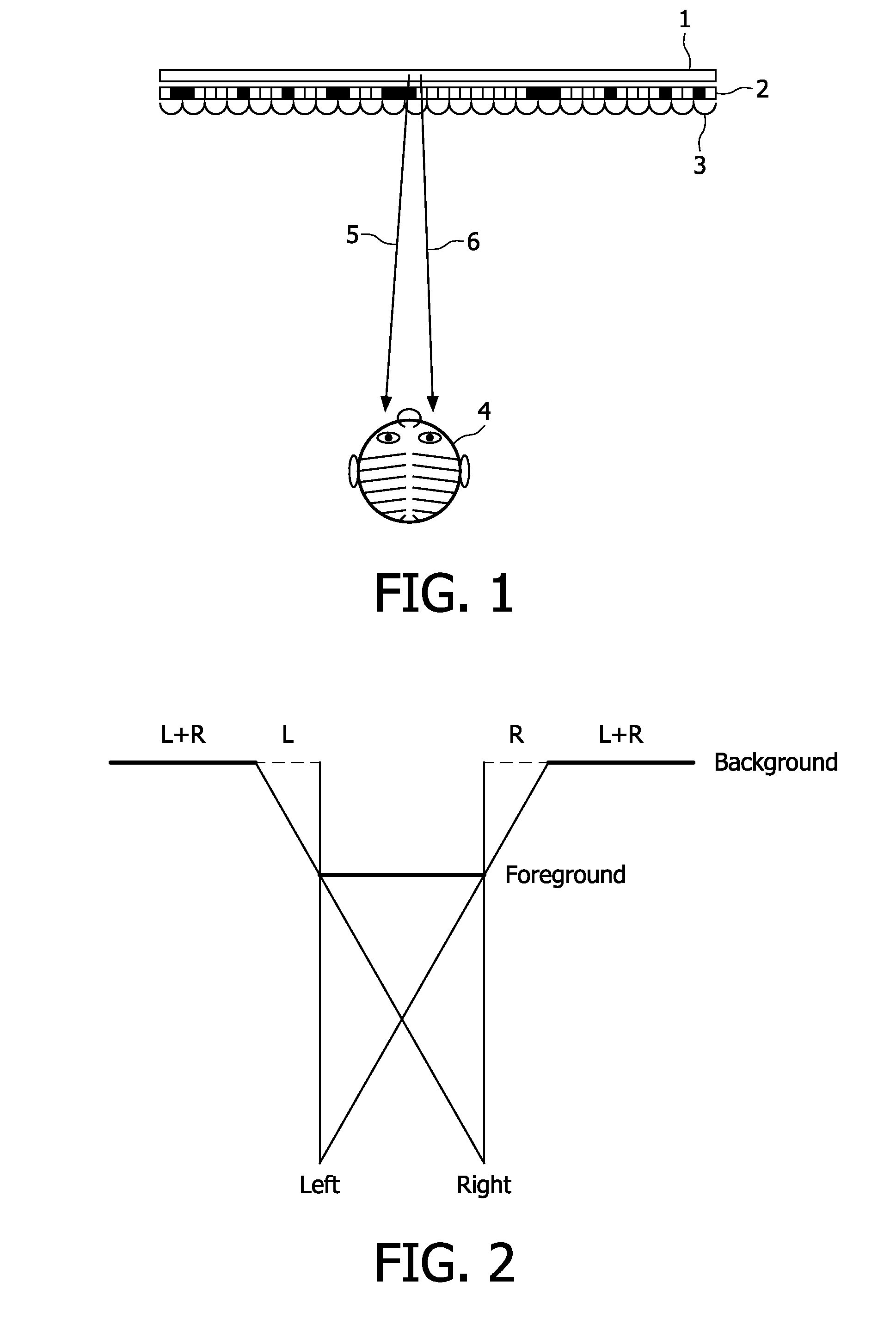Method and system for encoding a 3D video signal, encoder for encoding a 3-D video signal, encoded 3D video signal, method and system for decoding a 3D video signal, decoder for decoding a 3D video signal.
a technology of video signal and encoder, applied in the field of video encoding and decoding, can solve the problems of insufficient processing power and/or transmission capacity, glass wear to produce any effect, and insufficient amount of processing and/or transmission of digital image signals, etc., to reduce the amount of overall data, reduce the amount of additional layers, and reduce the effect of effective data
- Summary
- Abstract
- Description
- Claims
- Application Information
AI Technical Summary
Benefits of technology
Problems solved by technology
Method used
Image
Examples
Embodiment Construction
[0070]FIG. 1 illustrates the basic principle of a type of auto-stereoscopic display device. The display device comprises a lenticular screen 3 for forming two stereo images 5 and 6. The vertical lines of two stereo images are (spatially) alternatingly displayed on, e.g., a spatial light modulator 2 (e.g. a LCD) with a backlight 1. Together the back light and the spatial light modulator form a pixel array. The lens structure of the lenticular screen 3 directs the stereo image to the appropriate eye of the viewer. In this example two images are shown. The invention is not restricted to a two view situation; in fact the more views are to be rendered, the more information is to be encoded and the more the present invention is useful. However, for ease of explanation, in FIG. 1 a two view situation is depicted. It is noted, that an important advantage of the invention is that multiple (types of) layers also allow wider sideview capabilities and / or large depth range displays since it allo...
PUM
 Login to View More
Login to View More Abstract
Description
Claims
Application Information
 Login to View More
Login to View More - R&D
- Intellectual Property
- Life Sciences
- Materials
- Tech Scout
- Unparalleled Data Quality
- Higher Quality Content
- 60% Fewer Hallucinations
Browse by: Latest US Patents, China's latest patents, Technical Efficacy Thesaurus, Application Domain, Technology Topic, Popular Technical Reports.
© 2025 PatSnap. All rights reserved.Legal|Privacy policy|Modern Slavery Act Transparency Statement|Sitemap|About US| Contact US: help@patsnap.com



